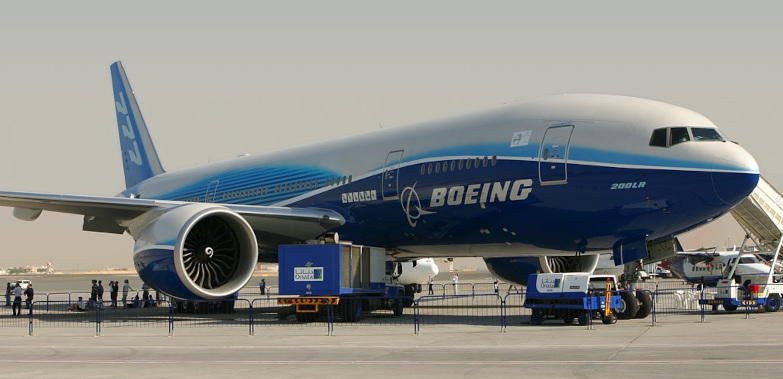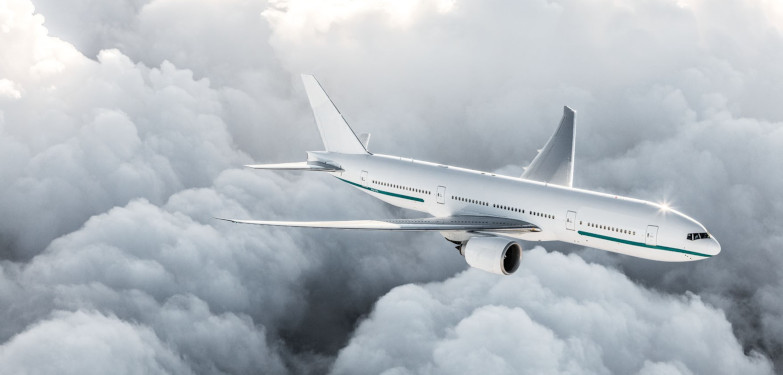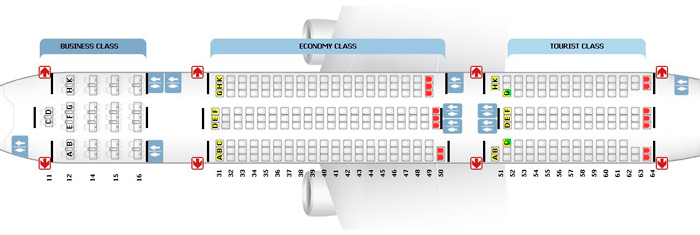
777-200LR Details and Seat Map
Introduction to the Boeing 777-200LR
Boeing 777-200LR (“Longer Range”) stands as a pinnacle of long-haul aviation, offering an extensive range and cutting-edge features. Introduced as a model for Segment C, this aircraft became a game-changer in 2006 when it claimed the title of the world’s longest-range commercial airliner.
Design and Capacity: The Boeing 777-200LR boasts a thoughtfully designed interior that prioritizes passenger comfort. With a focus on efficiency and spaciousness, the cabin layout ensures a pleasant journey for travelers. The aircraft can be configured to accommodate varying seat arrangements based on the preferences and needs of the airline.
Long-Range Capability: The standout feature of the Boeing 777-200LR is, of course, its unparalleled range. This aircraft has redefined the possibilities of non-stop air travel, enabling airlines to connect distant destinations without the need for layovers. The ability to cover extensive distances in a single flight has positioned the 777-200LR as a preferred choice for ultra-long-haul routes.
Efficiency and Performance: Built with efficiency in mind, the 777-200LR incorporates advanced technologies that optimize fuel consumption and reduce operational costs. The aircraft’s performance capabilities, coupled with its fuel-efficient engines, contribute to its reputation as a reliable and cost-effective solution for airlines operating long-haul flights.
Innovation and Avionics: The avionics suite of the Boeing 777-200LR reflects the latest advancements in aviation technology. The cockpit is equipped with modern navigation systems, electronic flight instruments, and automated controls, enhancing both safety and pilot efficiency. The integration of cutting-edge technology ensures a smooth and secure flying experience.
Versatility Across Routes: The versatility of the Boeing 777-200LR extends to its ability to serve a diverse range of routes. Whether connecting major international hubs or reaching more remote destinations, this aircraft has proven its adaptability in various operational environments.
History of the Boeing 777-200LR
The creation of the Boeing 777-200LR, one of the longest-range and most revolutionary airliners in aviation history, represents an exciting milestone in the evolution of commercial aviation. At the end of the 20th century, as Boeing resolutely set out to develop a new aircraft to meet the growing demands of global transport.
In 1990, as the aviation industry faced increasing demand for long flights, Boeing began designing the Boeing 777 with two major market scenarios in mind. The aircraft intended for the “A market” was to provide a range of 8000-9000 kilometres, suitable for North Atlantic routes. The aircraft for ‘market B’ was to cover ranges of 11000-13000 km, connecting transcontinental airlines and routes between Europe and the US west coast.
The Boeing 777-200 was the initial response to the needs of the “A market”. As the aircraft in this line continued to evolve, there was a need for an aircraft for the “B market”. Thus began the development of the Boeing 777-200LR. With unique technologies including three additional fuel tanks, a reinforced structure and optimised aerodynamic solutions, the new model provided a whole new level of range.

November 2005 marked a key point in the history of the Boeing 777-200LR. The aircraft made an incredible flight around the world, covering a distance of 21,602 kilometres without landing. This record-breaking flight, including covering the distance from Hong Kong to London in 22 hours and 42 minutes, set a new standard in ultra-long-haul transport.
The Boeing 777-200LR quickly earned its place in global aviation, becoming not only a symbol of innovation but also of performance. The model continues to successfully serve its routes, providing airlines and passengers with unique flight options between the most remote locations on the planet.
Technical Specifications 777-200LR
Dimensions
| Length | 63.7 m |
| Wingspan | 64.8 m |
| Height | 18.6 m |
| Wing area | 436.8 sq.m. |
Flight data
| Flight range with max. load | 15 040 – 17 450 km |
| Max. cruising speed | 905 km/h |
| Maximum speed | 945 km/h |
| Ceiling (max. flight height) | 13 100 m |
| Run-up length | 2 900 m |
| Run length | 1 700 m |
| Engines | GE GE90-110B1, 2 x 49900 kgf |
Passenger compartment
| Number of seats (economy) | 440 |
| Number of seats (economy/business) | 400 |
| Number of seats (economy/business/first) | 301 |
| Cabin width | 5.87 m |
Weight
| Max. take-off weight | 322 050 – 347 800 kg |
| Max. landing weight | 220 900 – 223 170 kg |
| Empty weight | 155 580 – 156 030 kg |
| Max. weight without fuel | 206 840 – 209 110 kg |
| Max. commercial load | 50 850 kg |
| Fuel tank capacity | 202 500 L |
Boeing 777 200LR Seat Map
The Boeing 777-200LR cabin provides an outstanding level of comfort and seating configuration flexibility. In a three-class layout, emphasizing both space and comfort, there are 305 passenger seats. The three-class configuration typically includes business class, premium economy class, and economy class.
Opting for a two-class layout, the Boeing 777-200LR becomes a true mass transport hero, accommodating 400 passengers. This configuration usually comprises business class and economy class.
For those favoring economical options, there’s the possibility of an economical cabin layout, offering a total of 440 passenger seats. This option is particularly relevant for carriers aiming to provide affordable air travel and serve numerous passengers on a single flight.
Thus, despite the variability in cabin configurations, the Boeing 777-200LR caters to various airline needs, ensuring a high level of passenger comfort and operational efficiency on many long-haul routes.

Business Class: In the business class of the aircraft, seats are arranged in a Boeing 777-200LR seat map with a 2+3+2 or 2+2+2 configuration, with one seat removed from the center row. The seats convert into a horizontal bed measuring 183 cm, equipped with touch-control panels, shoe storage compartments, a minibar, privacy partitions, and 23-inch entertainment system screens.
Premium Economy Class: The premium class includes enhanced comfort and service compared to economy class, though not as luxurious as business class. Passengers in premium class typically enjoy wider and more comfortable seats, additional legroom, improved dining options, and other extra amenities.
Economy Class: Economy class in Boeing 777-200LR aircraft generally offers basic comfort conditions for passengers at more affordable fares compared to premium classes. Here are some common features of the economy class in Boeing 777-200LR:
Seats: Economy class seats are typically narrower compared to higher service classes. They may be arranged in rows of 3 x 3 x 3, meaning three seats on each side, three in the center, and three on the other side.
Monitor screens in economy class are usually modest in size and may offer basic entertainment options, such as movies, music, and games. Legroom in economy class can be limited.
Boeing 777 200LR Seat Plan Comparison
| Airline | Classes / Configuration | Total Seats |
|---|---|---|
| Air Canada Boeing 777-200LR | Business / 1-2-1, 2-2-2 Premium Economy / 2-4-2 Economy / 3-4-3 |
300 |
| Ethiopian Airlines Boeing 777-200LR | Business / 2-3-2 Economy / 3-3-3 |
315 |
| Emirates Boeing 777-200LR | First / 1-2-1 Business / 2-3-2 Economy / 3-4-3 |
266 |
| Delta Air Lines Boeing 777-200LR | Business Class / 1-2-1 Economy Extra / 3-3-3 Economy / 3-3-3 |
291 |
| Qatar Airways Boeing 777-200LR | Business / 2-3-2, 2-2-2 Economy / 3-3-3, 3-4-3 |
259,272 |





